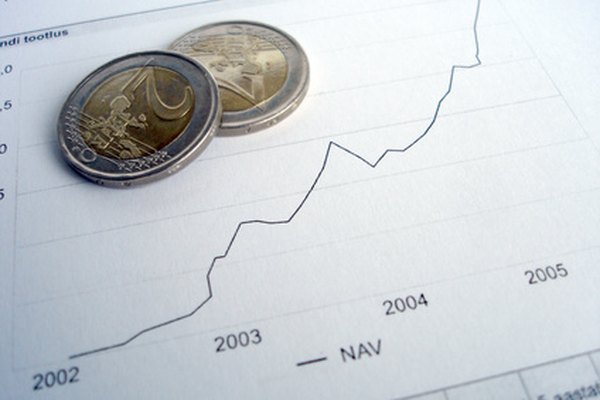How Would a Yield Curve Change if People Prefer Short-Term Bonds Rather Than Long-Term Bonds?
The shape of the yield curve reveals investors' preferences.
investing plans image by Mats Tooming from Fotolia.com
A yield curve is a visual representation of interest rates in an economy. This relatively simple graph captures indispensable information about the preferences of lenders and borrowers. Various factors can influence the shape of the yield curve. A shift in demand toward shorter-term bonds is one such factor.
Yield Curve
A yield curve is a graph that represents the interest rates for various bond terms. While you can construct any sort of yield curve you like, the one most commonly used shows the risk-free interest rates for terms ranging between one day and 30 years. The risk-free interest rate is the lowest interest rate in any economy. Borrowing instruments issued by the federal government, such as Treasury bills and government bonds, are assumed to carry no risk at all. So a typical yield curve is a two-dimensional graph where interest rates are represented on the vertical Y axis and borrowing terms are on the X axis. By plotting interest rates on government bills and bonds that will come due anywhere from a month to 30 years in the future, you get a line that shows how interest rates vary based on the term of borrowing.
Slope of Curve
If short-term interest rates are lower than long-term rates, the yield curve is said to be upward sloping because the line will ascend as you visually track it from left to right. If short-term rates are higher than long-term rates, the yield curve will be downward sloping and will look like a descending line. If short- and long-term rates are roughly equal, the yield curve will be flat. In real life, things are more complicated, of course. The first half of the curve may be upward sloping, while the second half may be flat.
Demand vs. Yield
The more a bond is in demand, the lower its interest rate will be. Like all other things, high demand for a bond results in a higher price; the higher the price of a bond, the lower its resulting interest rate, or yield. One way to think of this relationship is as follows: A bond is a payment obligation by the issuer. In case of government bonds, the U.S. government will pay, let's say, $100 to the bondholder every year. If you buy the bond for $95, you are still entitled to the $10 annual payment and are getting a better deal -- a higher yield -- than the original buyer.
Shift in Preference
So if people's preference shifts to short-term bonds, the price of short-term bonds will rise. Therefore, the interest rate on short terms bonds will decrease. If the yield curve was upward sloping before this shift, it will retain an upward slope and show a sharper ascent. If the curve was previously flat, it will now have an upward slope. If, however, the curve was downward sloping previously, its downward slope may be less pronounced. Depending on how severe the decline in low terms rates is, the previously upward sloping curve may become a flat one, a downward sloping one or merely end up with a less dramatic upward slope.
References
Writer Bio
Hunkar Ozyasar is the former high-yield bond strategist for Deutsche Bank. He has been quoted in publications including "Financial Times" and the "Wall Street Journal." His book, "When Time Management Fails," is published in 12 countries while Ozyasar’s finance articles are featured on Nikkei, Japan’s premier financial news service. He holds a Master of Business Administration from Kellogg Graduate School.

